An Ordinary State-Based Peridynamic Model for Fatigue Cracking of Ferrite and Pearlite Wheel Material
Abstract
:1. Introduction
2. Mechanism of Fatigue Damage Evolution
2.1. Fatigue Damage Evolution
2.2. Fatigue Damage Evolution Law
3. Peridynamic Theory for Fatigue Cracking
3.1. Basic Theory
3.2. Energy-Based Failure Criterion
3.3. Fatigue Crack Tip Deformation Analysis
4. Trans-Scale Peridynamic Fatigue Model
4.1. Bond Damage and Point Damage within the Horizon
4.1.1. Bond Fatigue Damage and Failure
4.1.2. Point Damage and Fatigue Cracking
4.2. Trans-Scale Fatigue Model
4.3. Transition from Fatigue Crack Initiation to Growth
5. Numerical Solution Method
5.1. Adaptive Dynamic Relaxation for Static Solution
5.2. Equivalent Stress Intensity Factor
5.3. Flowchart for the Fatigue Cracking Simulation
6. Experiment
6.1. Experimental Equipment
6.2. Specimen Size Requirements and Loading Parameters
6.3. Fatigue Crack Path and Morphology
6.4. Results Analysis
7. Conclusions
- (1)
- To evaluate and predict the fatigue life of specimens under combined tension and torsion, the peridynamic fatigue model was proposed and the fatigue cracks initiate and propagate naturally without extra criteria.
- (2)
- The proposed trans-scale fatigue model has no notion of scale, or it releases the scale constraints. The evolution of fatigue crack shows micro and macro scale including crack initiation, propagation, and fracture.
- (3)
- The short diffusion-generated and propagating crack converges and grows into the main crack, which expands to the macroscopic visible morphology.
- (4)
- The macroscopic morphology of fatigue was highly consistent with the actual experimental results and extended along the direction of 61.54° until the final fracture.
- (5)
- The natural propagation of the crack can be realized without the need for additional crack propagation criteria, and the distribution and quantitative analysis of the fatigue life can be obtained.
Author Contributions
Funding
Conflicts of Interest
References
- Klesnil, M.; Lukác, P. Fatigue of Metallic Materials; Elsevier: Amsterdam, The Netherlands, 1992. [Google Scholar]
- Bannantine, J.; Comer, J.; Handrock, J. Fundamentals of Metal Fatigue Analysis((Book)); Research Supported by the University of Illinois Englewood Cliffs: Prentice Hall, NJ, USA, 1990; Volume 286. [Google Scholar]
- Schijve, J. Fatigue of Structures and Materials; Springer Science & Business Media: New York, NY, USA, 2001. [Google Scholar]
- Antonopoulos, J.G.; Brown, L.M.; Winter, A.T. Vacancy dipoles in fatigued copper. Philos. Mag. 1976, 34, 549–563. [Google Scholar] [CrossRef]
- Man, J.; Obrtlik, K.; Blochwitz, C.H.; Polak, J. Atomic force microscopy of surface relief in individual grains of fatigued 316L austenitic stainless steel. Acta Mater. 2002, 50, 3767–3780. [Google Scholar] [CrossRef]
- Brinckmann, S.; Sivanesapillai, R.; Hartmaier, A. On the formation of vacancies by edge dislocation dipole annihilation in fatigued copper. Int. J. Fatigue 2011, 33, 1369–1375. [Google Scholar] [CrossRef]
- Oskay, C.; Fish, J. Fatigue life prediction using 2-scale temporal asymptotic homogenization. Int. J. Numer. Methods Eng. 2004, 61, 329–359. [Google Scholar] [CrossRef]
- Vinogradov, A.; Hashimoto, S. Multiscale phenomena in fatigue of ultra-fine grain materials—An overview. Mater. Trans. 2001, 42, 74–84. [Google Scholar] [CrossRef] [Green Version]
- Fish, J.; Bailakanavar, M.; Powers, L.; Cook, T. Multiscale fatigue life prediction model for heterogeneous materials. Int. J. Numer. Methods Eng. 2012, 91, 1087–1104. [Google Scholar] [CrossRef]
- Lépinoux, J.; Mazière, D.; Pontikis, V.; Saada, G. Multiscale Phenomena in Plasticity: From Experiments to Phenomenology, Modelling and Materials Engineering; Springer Science & Business Media: Ouranoupolis, Greece, 2012. [Google Scholar]
- Oskay, C.; Fish, J. Multiscale modeling of fatigue for ductile materials. Int. J. Multiscale Comput. Eng. 2004, 2. [Google Scholar] [CrossRef]
- Jung, J.; Seok, J. Fatigue crack growth analysis in layered heterogeneous material systems using peridynamic approach. Compos. Struct. 2016, 152, 403–407. [Google Scholar] [CrossRef]
- Hanson, M.T.; Keer, L.M. An analytical life prediction model for the crack propagation occurring in contact fatigue failure. Tribol. Trans. 1992, 35, 451–461. [Google Scholar] [CrossRef]
- Yang, B.; Mall, S.; Ravi-Chandar, K. A cohesive zone model for fatigue crack growth in quasibrittle materials. Int. J. Solids Struct. 2001, 38, 3927–3944. [Google Scholar] [CrossRef]
- Pook, L. Why Metal Fatigue Matters; Springer: Berlin/Heidelberg, Germany, 2007. [Google Scholar]
- Schijve, J. Fatigue damage in aircraft structures, not wanted, but tolerated? Int. J. Fatigue 2009, 31, 998–1011. [Google Scholar] [CrossRef]
- Liu, Y.; Mahadevan, S. Multiaxial high-cycle fatigue criterion and life prediction for metals. Int. J. Fatigue 2005, 27, 790–800. [Google Scholar] [CrossRef]
- Nisitani, H.; Teranishi, T. KI of a circumferential crack emanating from an ellipsoidal cavity obtained by the crack tip stress method in FEM. Eng. Fract. Mech. 2004, 71, 579–585. [Google Scholar] [CrossRef]
- Kikuchi, M.; Wada, Y.; Shintaku, Y.; Suga, K.; Li, Y. Fatigue crack growth simulation in heterogeneous material using s-version FEM. Int. J. Fatigue 2014, 58, 47–55. [Google Scholar] [CrossRef]
- Ondráček, J.; Materna, A. FEM evaluation of the dissipated energy in front of a crack tip under 2D mixed mode loading condition. Procedia Mater. Sci. 2014, 3, 673–678. [Google Scholar] [CrossRef] [Green Version]
- Solanki, K.; Daniewicz, S.R.; Newman, J.C., Jr. Finite element analysis of plasticity-induced fatigue crack closure: An overview. Eng. Fract. Mech. 2004, 71, 149–171. [Google Scholar] [CrossRef]
- Sukumar, N.; Chopp, D.L.; Moran, B. Extended finite element method and fast marching method for three-dimensional fatigue crack propagation. Eng. Fract. Mech. 2003, 70, 29–48. [Google Scholar] [CrossRef]
- Anahid, M.; Samal, M.K.; Ghosh, S. Dwell fatigue crack nucleation model based on crystal plasticity finite element simulations of polycrystalline titanium alloys. J. Mech. Phys. Solids 2011, 59, 2157–2176. [Google Scholar] [CrossRef]
- Roe, K.L.; Siegmund, T.H. An irreversible cohesive zone model for interface fatigue crack growth simulation. Eng. Fract. Mech. 2003, 70, 209–232. [Google Scholar] [CrossRef]
- Newman, J.C. A crack-closure model for predicting fatigue crack growth under aircraft spectrum loading. In Methods and Models for Predicting Fatigue Crack Growth under Random Loading; ASTM International: West Conshohocken, PA, USA, 1981. [Google Scholar]
- Nguyen, O.; Repetto, E.A.; Ortiz, M.; Radovitzky, R.A. A cohesive model of fatigue crack growth. Int. J. Fract. 2001, 110, 351–369. [Google Scholar] [CrossRef]
- Giner, E.; Sukumar, N.; Tarancón, J.E.; Fuenmayor, F.J. An Abaqus implementation of the extended finite element method. Eng. Fract. Mech. 2009, 76, 347–368. [Google Scholar] [CrossRef] [Green Version]
- Pathak, H.; Singh, A.; Singh, I.V. Fatigue crack growth simulations of 3-D problems using XFEM. Int. J. Mech. Sci. 2013, 76, 112–131. [Google Scholar] [CrossRef]
- Bergara, A.; Dorado, J.I.; Martin-Meizoso, A.; Martínez-Esnaola, J.M. Fatigue crack propagation in complex stress fields: Experiments and numerical simulations using the Extended Finite Element Method (XFEM). Int. J. Fatigue 2017, 103, 112–121. [Google Scholar] [CrossRef]
- Kumar, S.; Shedbale, A.S.; Singh, I.V.; Mishra, B.K. Elasto-plastic fatigue crack growth analysis of plane problems in the presence of flaws using XFEM. Front. Struct. Civ. Eng. 2015, 9, 420–440. [Google Scholar] [CrossRef]
- Bhattacharya, S.; Singh, I.V.; Mishra, B.K.; Bui, T.Q. Fatigue crack growth simulations of interfacial cracks in bi-layered FGMs using XFEM. Comput. Mech. 2013, 52, 799–814. [Google Scholar] [CrossRef]
- Xu, Y.; Yuan, H. On damage accumulations in the cyclic cohesive zone model for XFEM analysis of mixed-mode fatigue crack growth. Comput. Mater. Sci. 2009, 46, 579–585. [Google Scholar] [CrossRef]
- Sangid, M.D. The physics of fatigue crack initiation. Int. J. Fatigue 2013, 57, 58–72. [Google Scholar] [CrossRef]
- Fu, H.-H.; Benson, D.J.; Meyers, M.A. Analytical and computational description of effect of grain size on yield stress of metals. Acta Mater. 2001, 49, 2567–2582. [Google Scholar] [CrossRef]
- Al-Rub, R.K.A.; Voyiadjis, G.Z. On the coupling of anisotropic damage and plasticity models for ductile materials. Int. J. Solids Struct. 2003, 40, 2611–2643. [Google Scholar] [CrossRef]
- Shenoy, M.M.; Gordon, A.P.; Mcdowell, D.L.; Neu, R.W. Thermomechanical fatigue behavior of a directionally solidified Ni-base superalloy. J. Eng. Mater. Technol. 2005, 127, 325–336. [Google Scholar] [CrossRef]
- Lemaitre, J.; Chaboche, J.-L. Mechanics of Solid Materials; Cambridge University Press: Cambridge, UK, 1994. [Google Scholar]
- Wilsdorf, H.G.F. The ductile fracture of metals: A microstructural viewpoint. Mater. Sci. Eng. 1983, 59, 1–39. [Google Scholar] [CrossRef]
- Silling, S.A.; Lehoucq, R.B. Peridynamic Theory of Solid Mechanics. In Advances in Applied Mechanics; Elsevier: Amsterdam, The Netherlands, 2010; pp. 73–168. [Google Scholar]
- Madenci, E.; Oterkus, E. Peridynamic Theory and Its Applications; Springer: New York, NY, USA, 2014. [Google Scholar]
- Kilic, B.; Agwai, A.; Madenci, E. Peridynamic theory for progressive damage prediction in center-cracked composite laminates. Compos. Struct. 2009, 90, 141–151. [Google Scholar] [CrossRef]
- Seleson, P.; Parks, M. On the role of the influence function in the peridynamic theory. Int. J. Multiscale Comput. Eng. 2011, 9, 689–706. [Google Scholar] [CrossRef]
- Kilic, B.; Madenci, E. Structural stability and failure analysis using peridynamic theory. Int. J. Non-Linear Mech. 2009, 44, 845–854. [Google Scholar] [CrossRef]
- Kilic, B.; Madenci, E. Prediction of crack paths in a quenched glass plate by using peridynamic theory. Int. J. Fract. 2009, 156, 165–177. [Google Scholar] [CrossRef]
- Oterkus, E.; Guven, I.; Madenci, E. Fatigue failure model with peridynamic theory. In Proceedings of the 2010 12th IEEE Intersociety Conference on Thermal and Thermomechanical Phenomena in Electronic Systems, F, 2010 IEEE, Las Vegas, NV, USA, 2–5 June 2010. [Google Scholar]
- Silling, S.A.; Askari, A. Peridynamic Model for Fatigue Cracking; Sandia National Laboratories: Albuquerque, NM, USA, 2014. [Google Scholar]
- Sarego, G.; Le Quang, V.; Bobaru, F.; Zaccariotto, M.; Galvanetto, U. Linearized state-based peridynamics for 2-D problems. Int. J. Numer. Methods Eng. 2016, 108, 1174–1197. [Google Scholar] [CrossRef]
- Zhang, G.; Le, Q.; Loghin, A.; Subramaniyan, A.; Bobaru, F. Validation of a peridynamic model for fatigue cracking. Eng. Fract. Mech. 2016, 162, 76–94. [Google Scholar] [CrossRef]
- Baber, F.; Guven, I. Solder joint fatigue life prediction using peridynamic approach. Microelectron. Reliab. 2017, 79, 20–31. [Google Scholar] [CrossRef]
- Littlewood, D.J. A nonlocal approach to modeling crack nucleation in AA 7075-T651. In Proceedings of the ASME 2011 International Mechanical Engineering Congress and Exposition, Denver, CO, USA, 11–17 November 2011; pp. 567–576. [Google Scholar]
- Hu, Y.L.; Madenci, E. Peridynamics for fatigue life and residual strength prediction of composite laminates. Compos. Struct. 2017, 160, 169–184. [Google Scholar] [CrossRef]
- Yokobori, T. The Strength, Fracture, and Fatigue of Materials; P. Noordhoff: Groningen, The Netherlands, 1965. [Google Scholar]
- Silling, S.A.; Epton, M.; Weckner, O.; Xu, J.; Askari, E. Peridynamic States and Constitutive Modeling. J. Elast. 2007, 88, 151–184. [Google Scholar] [CrossRef] [Green Version]
- Stenström, C.; Eriksson, K. The J-contour integral in peridynamics via displacements. Int. J. Fract. 2019, 216, 173–183. [Google Scholar] [CrossRef] [Green Version]

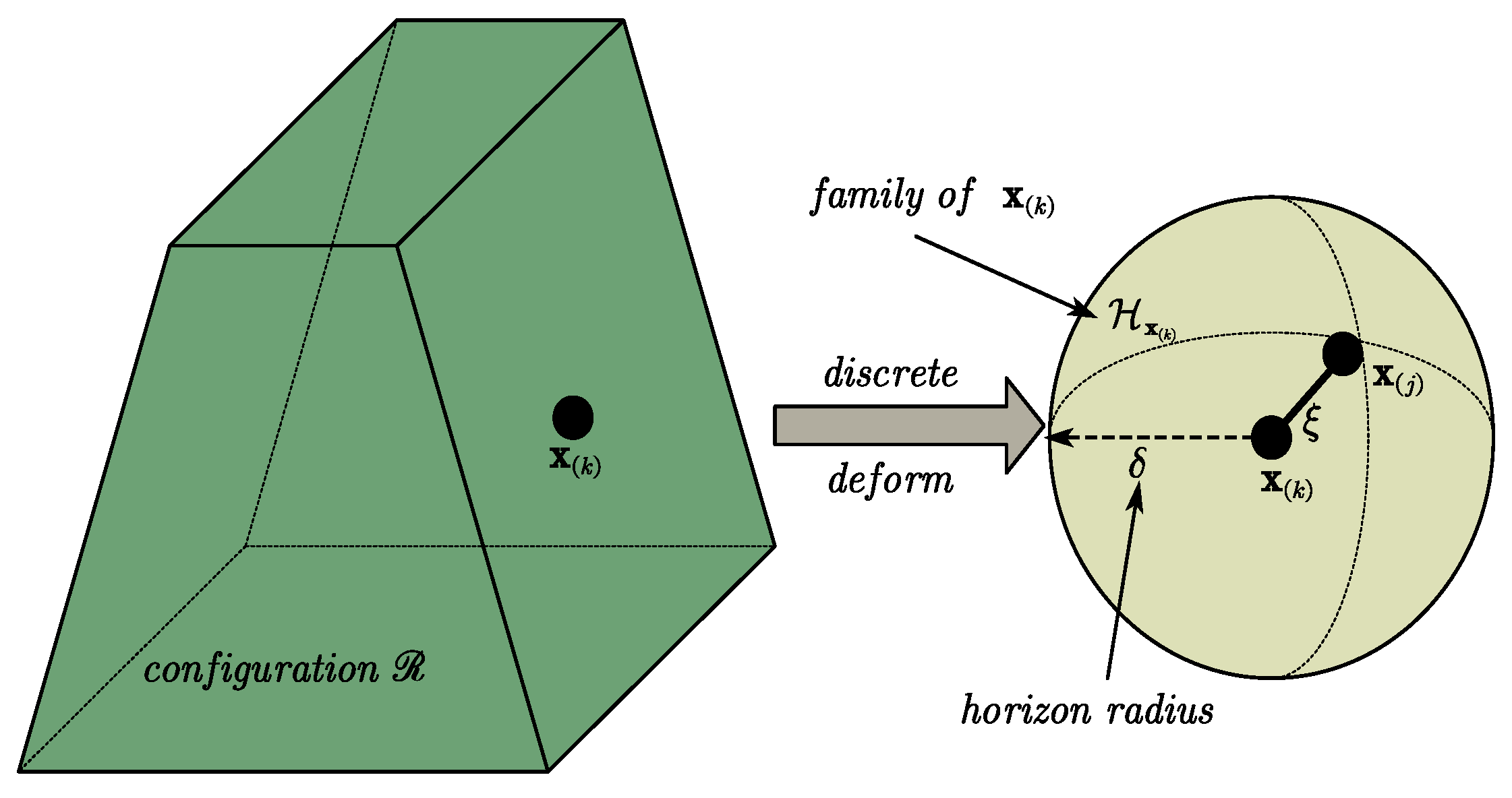
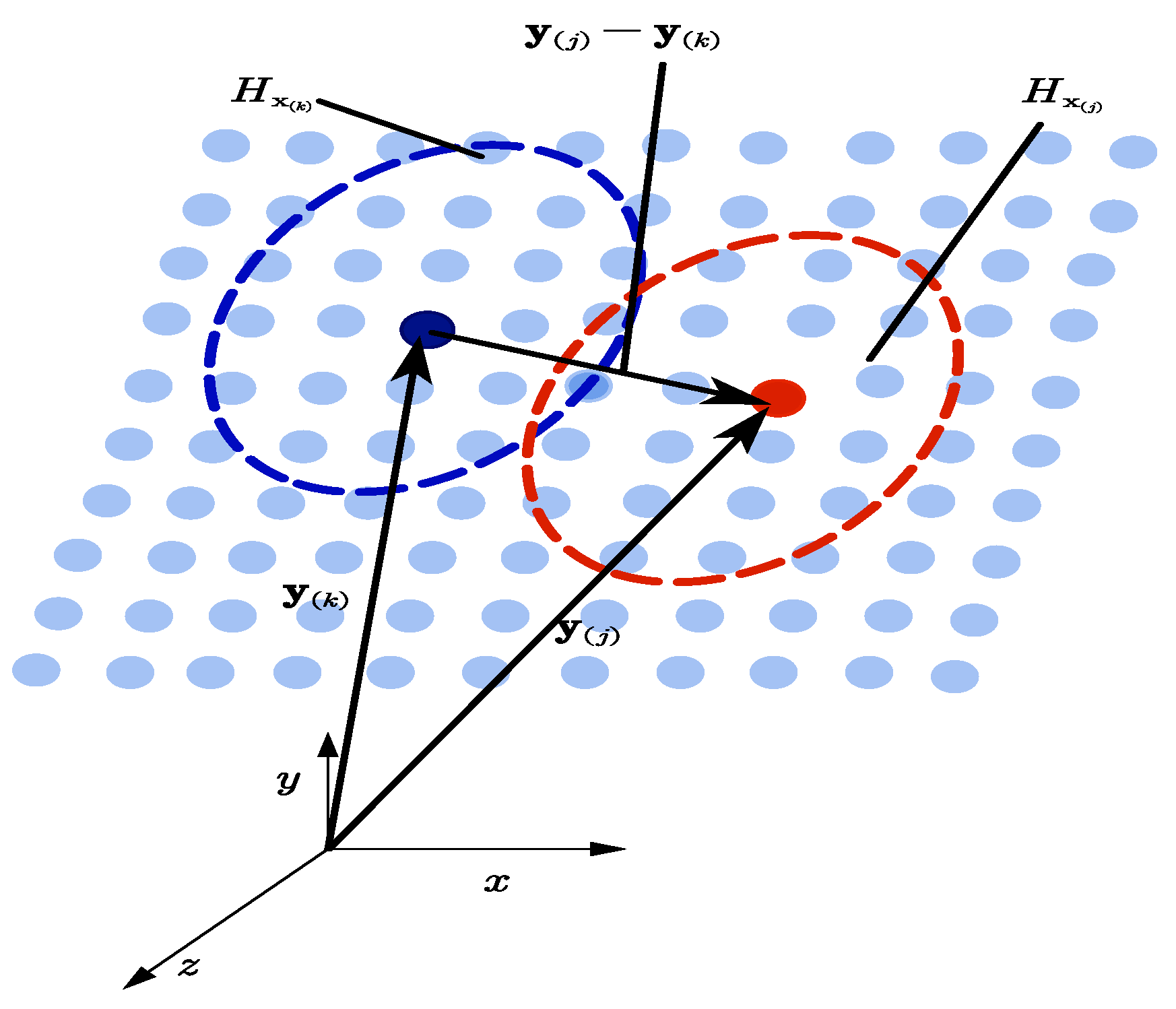
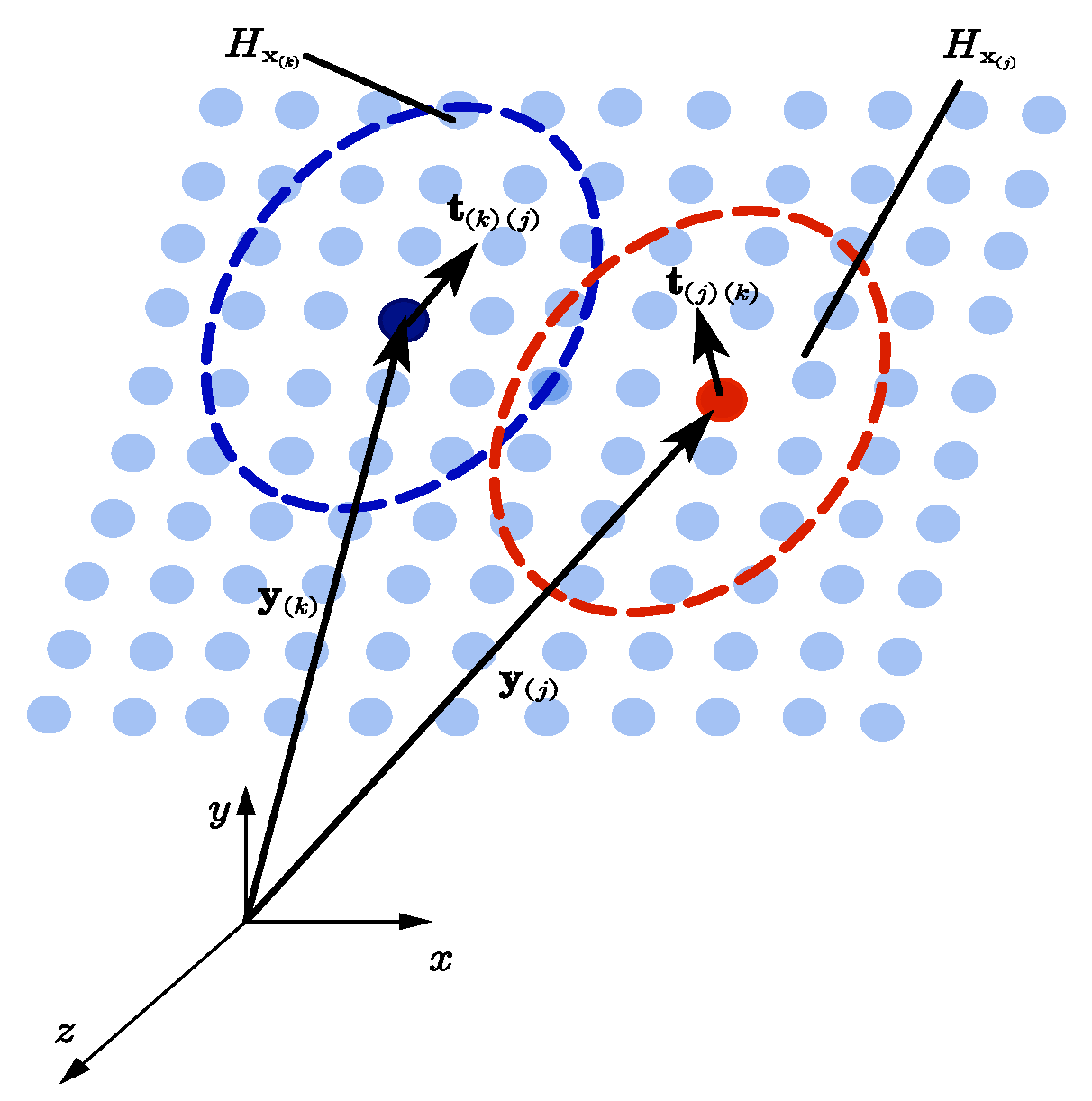

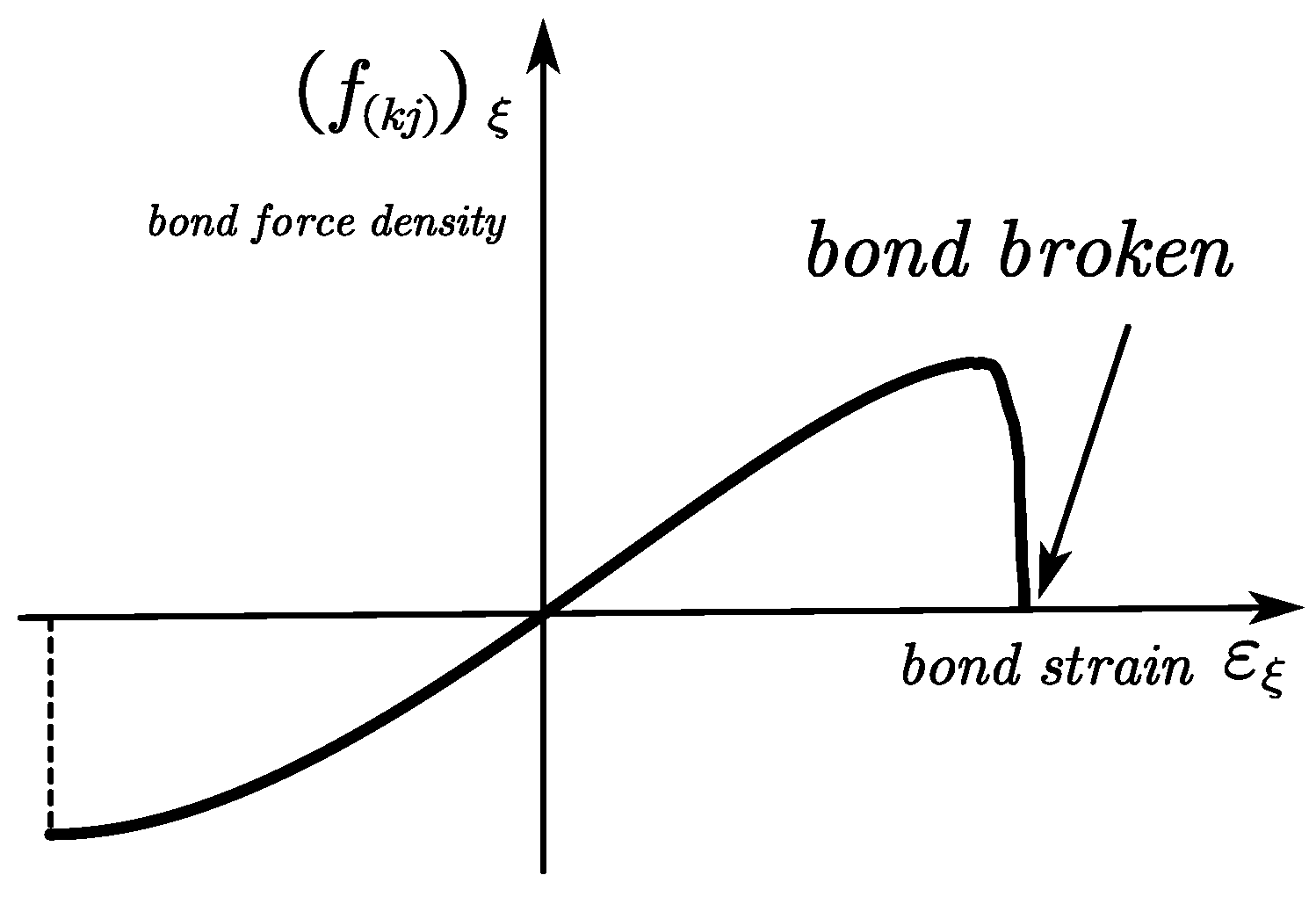

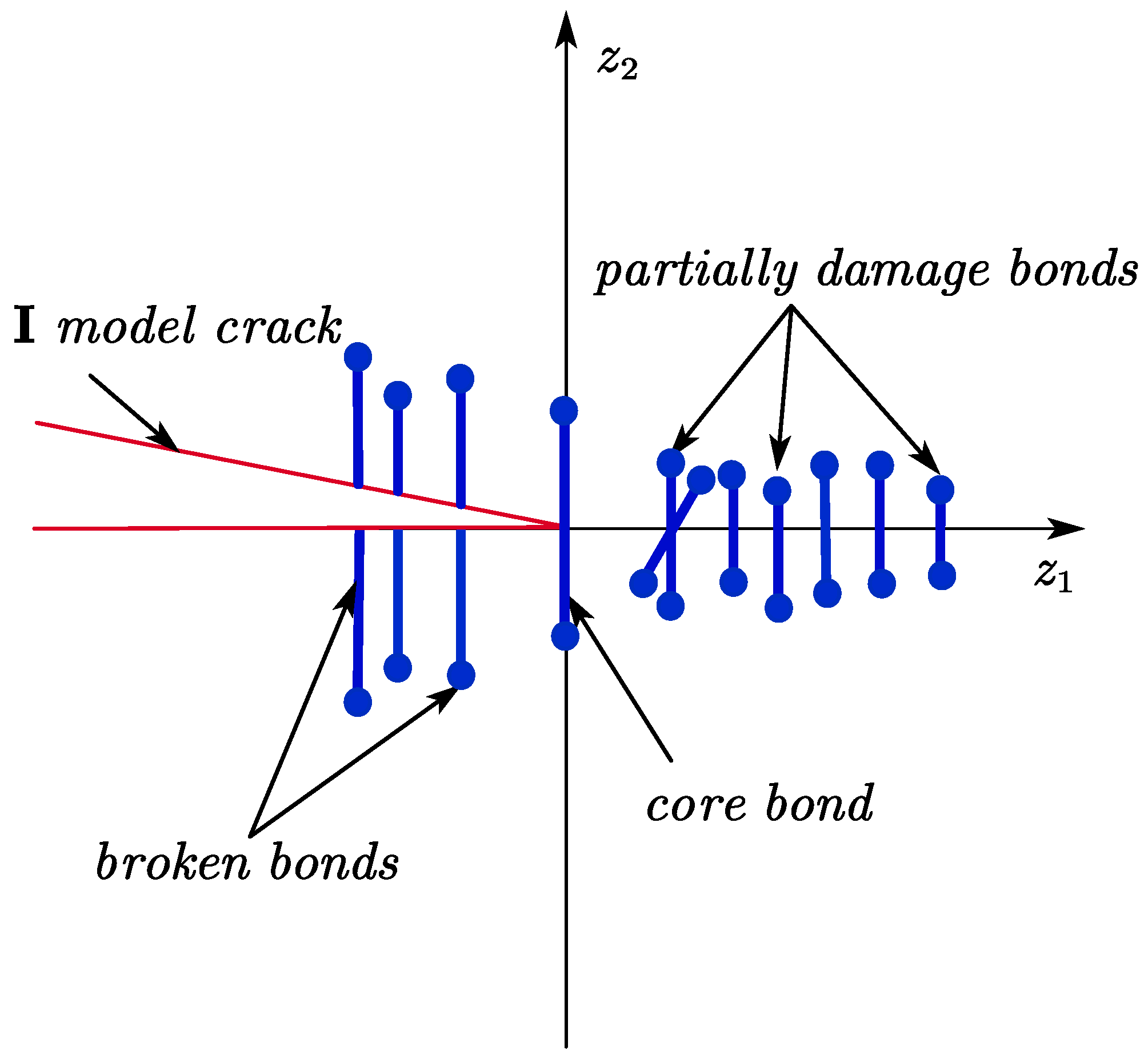
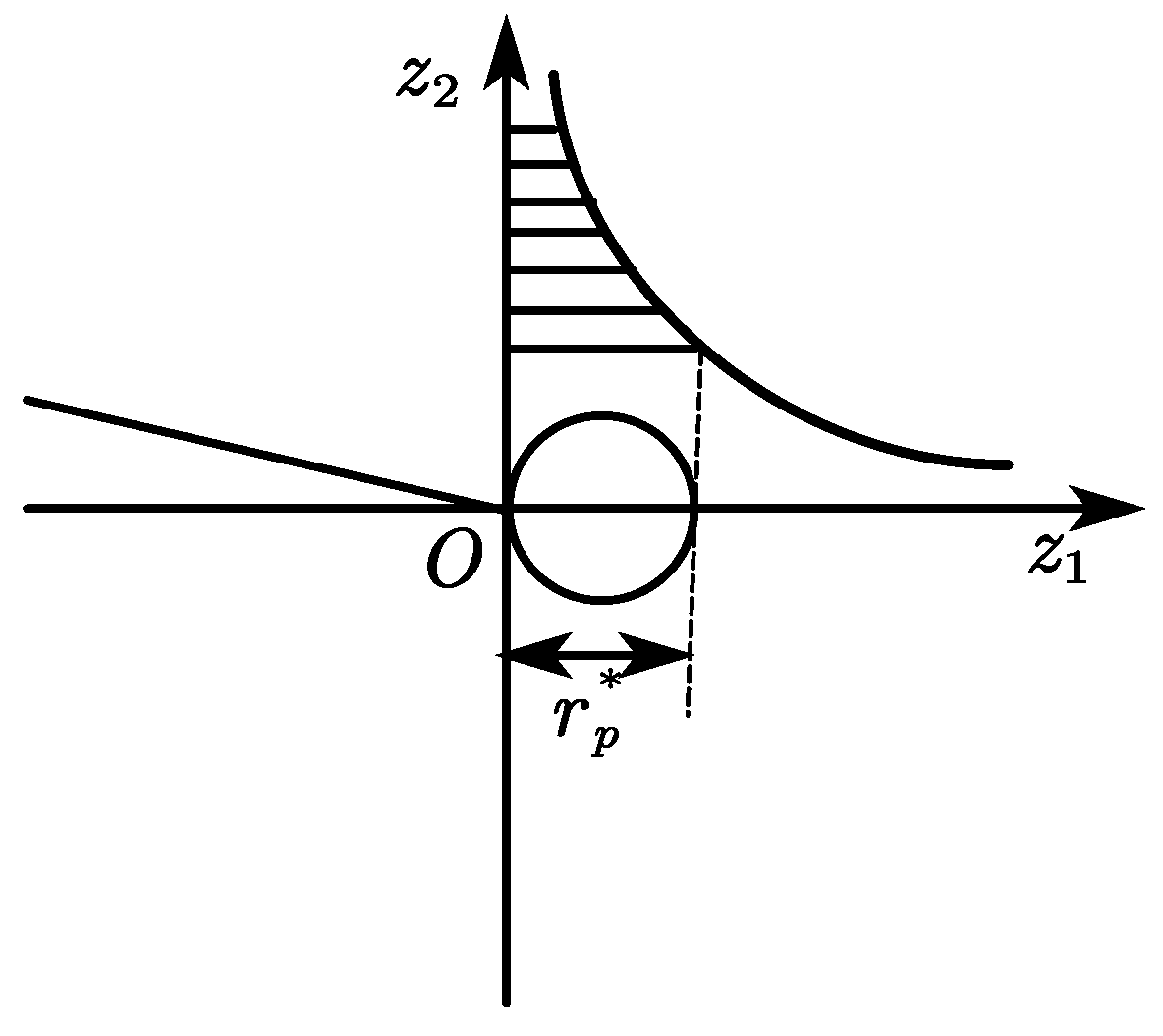
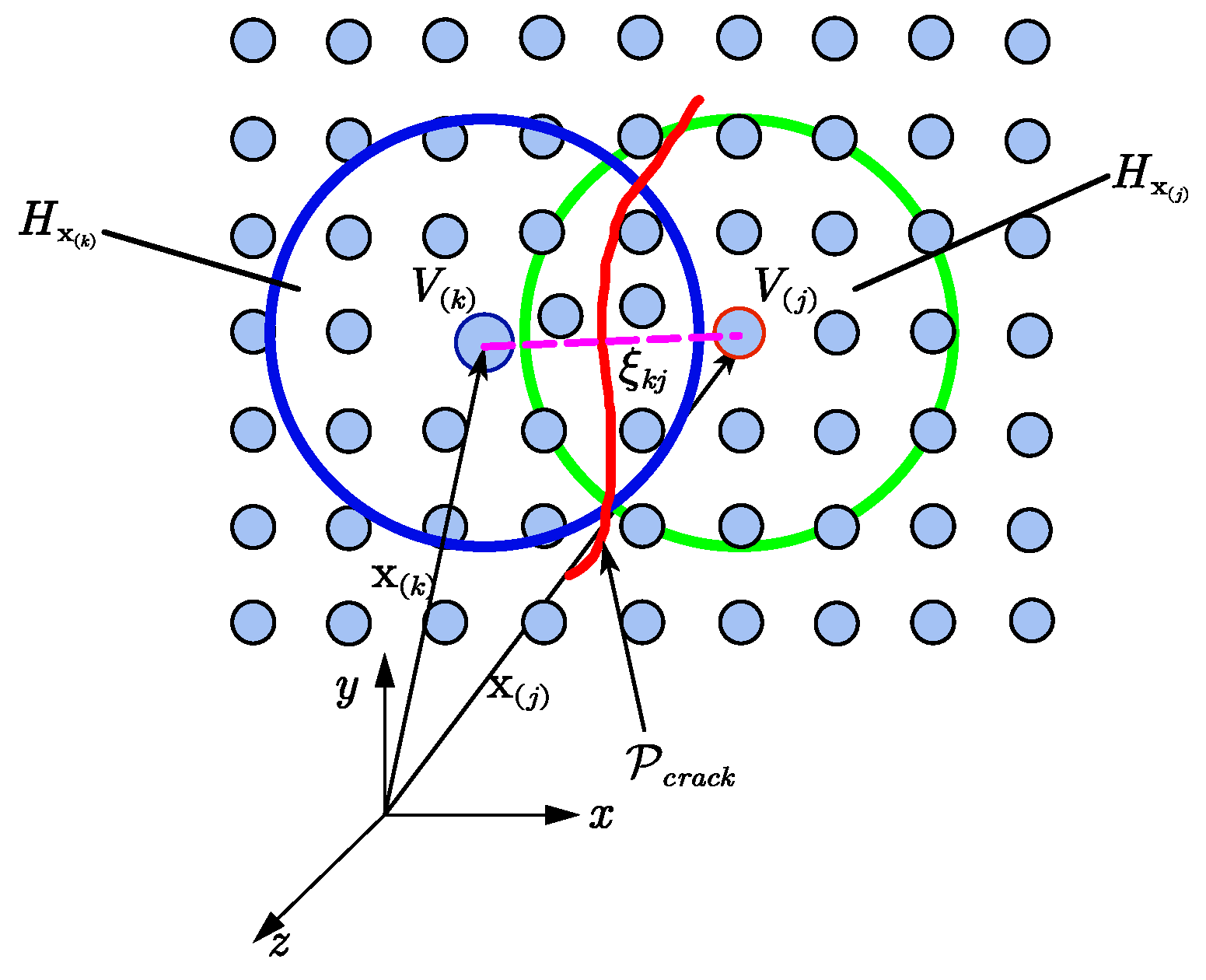
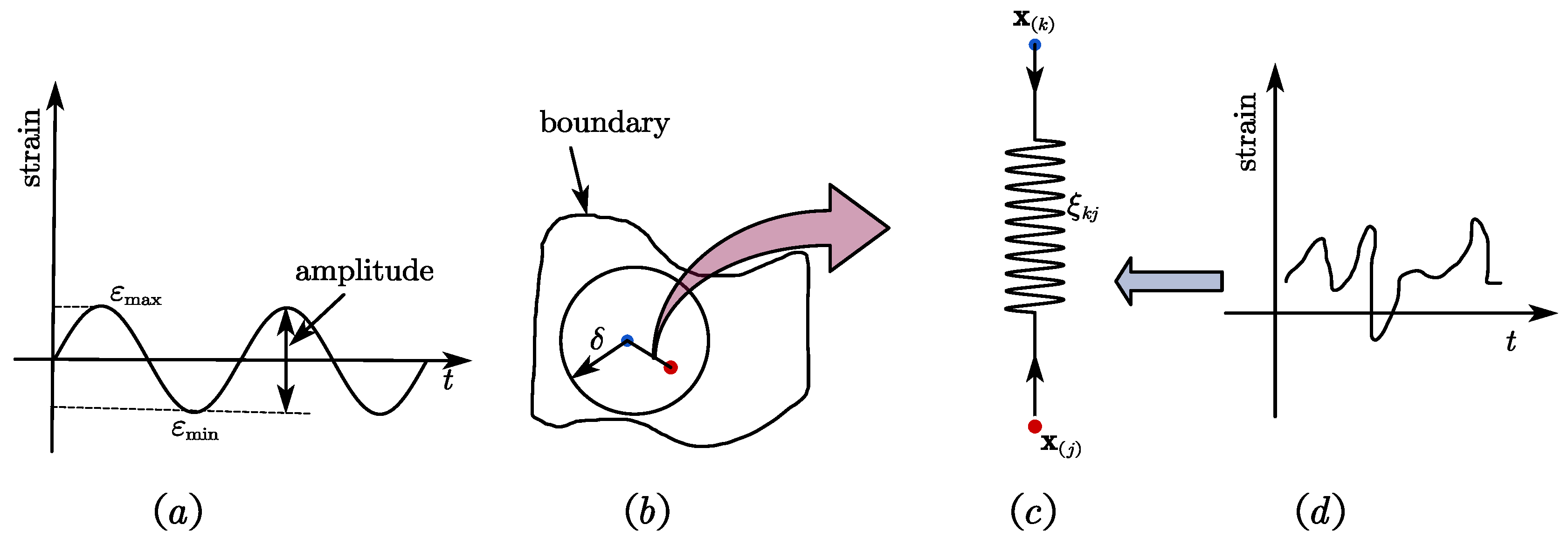

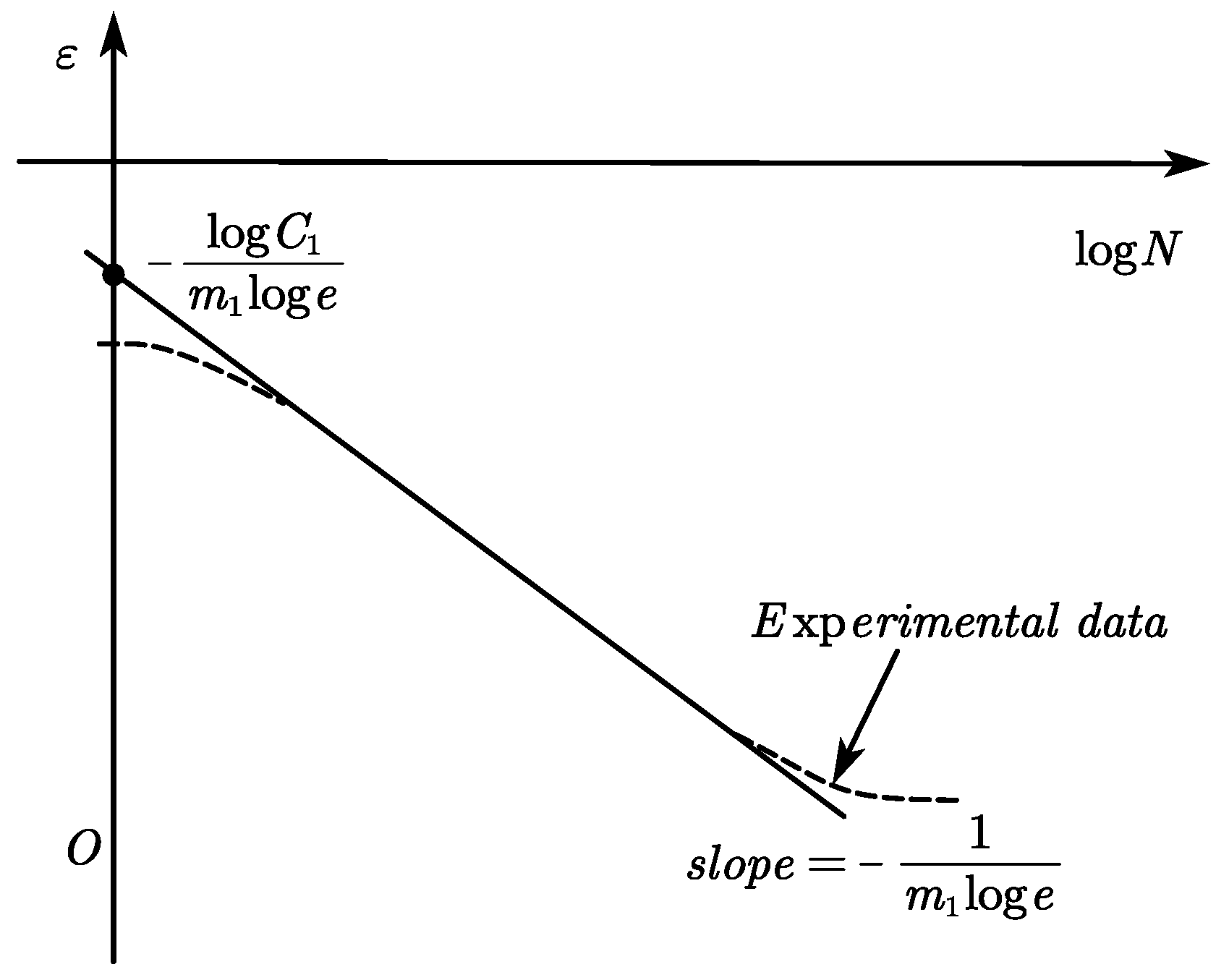
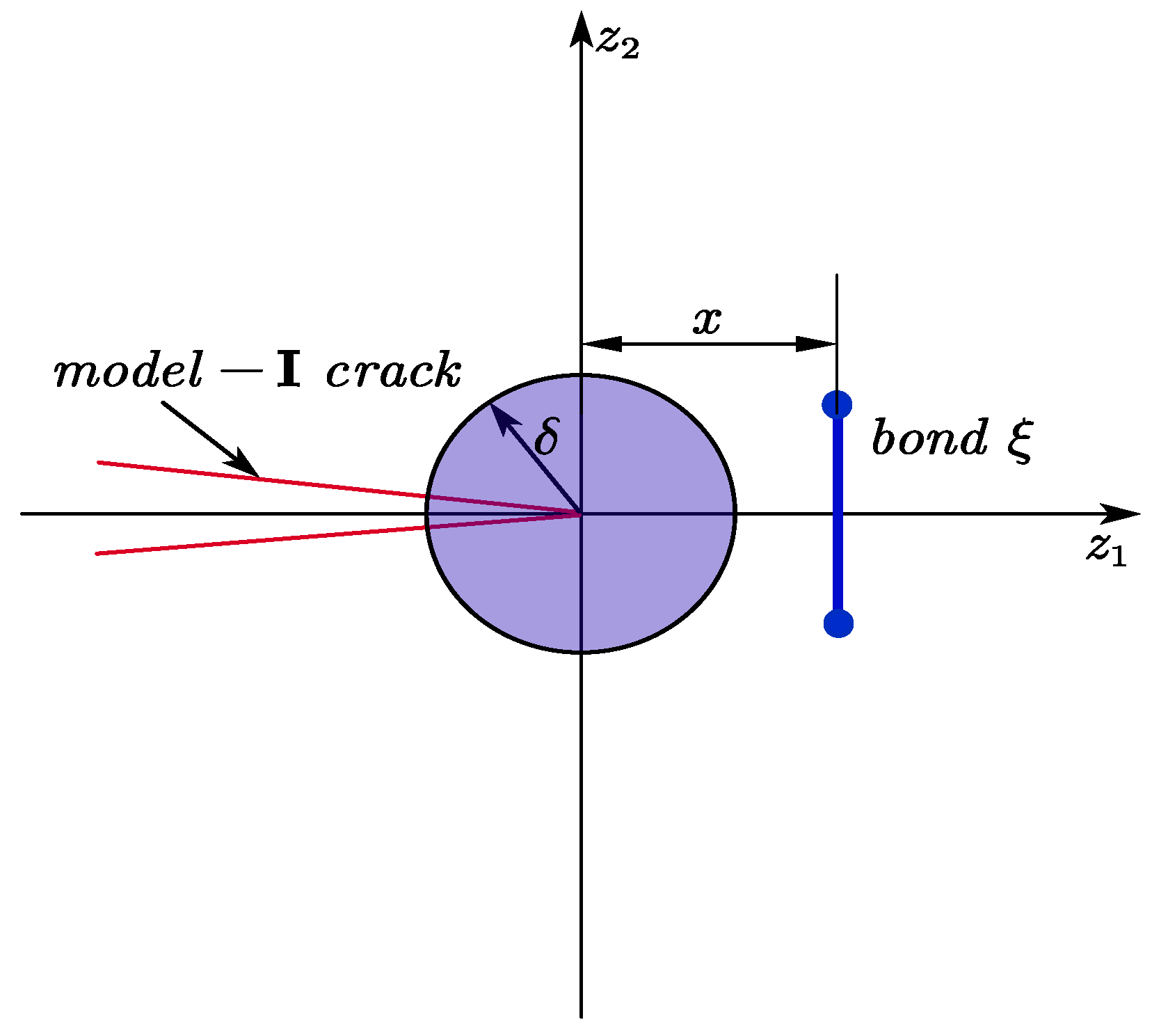
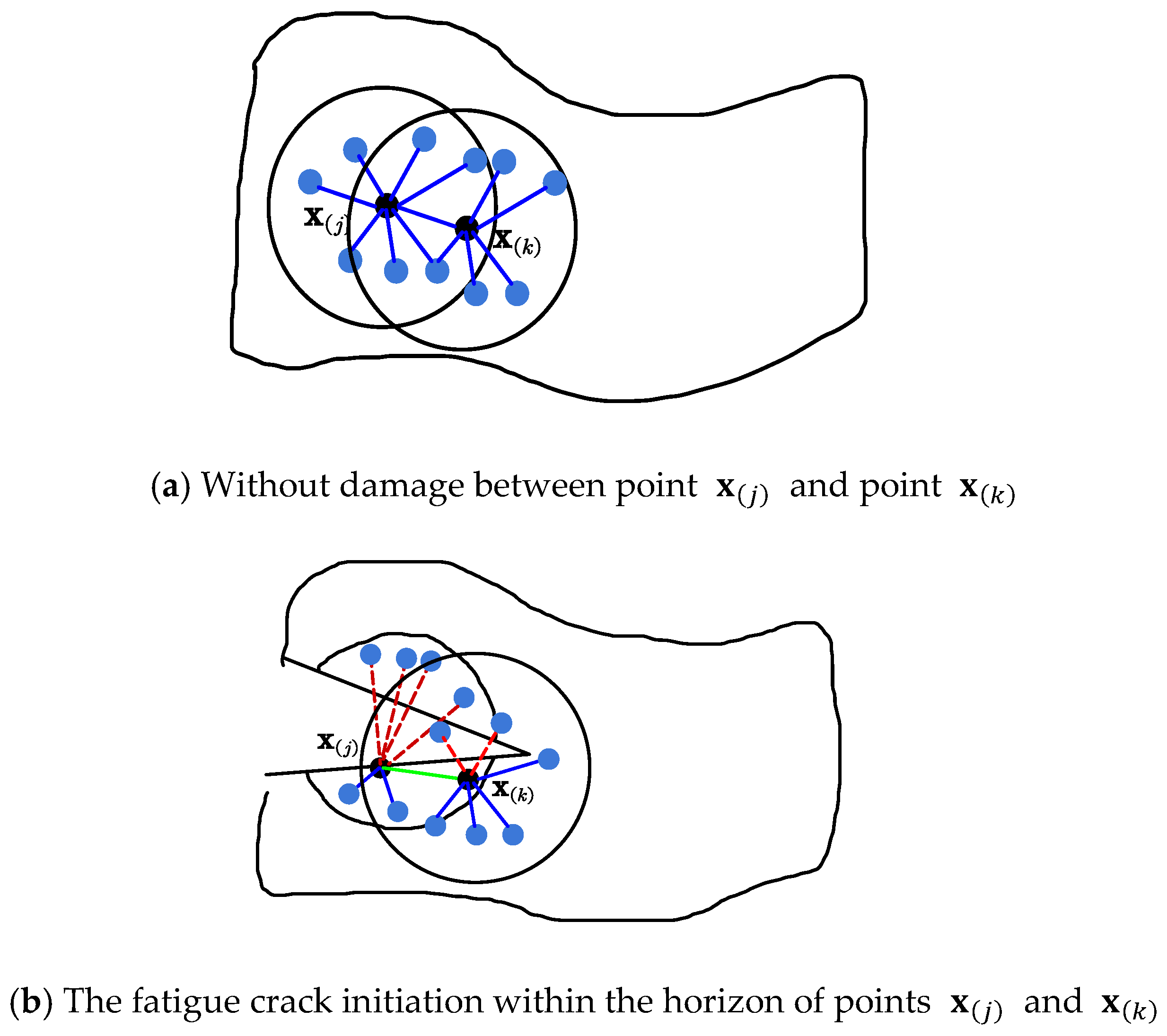
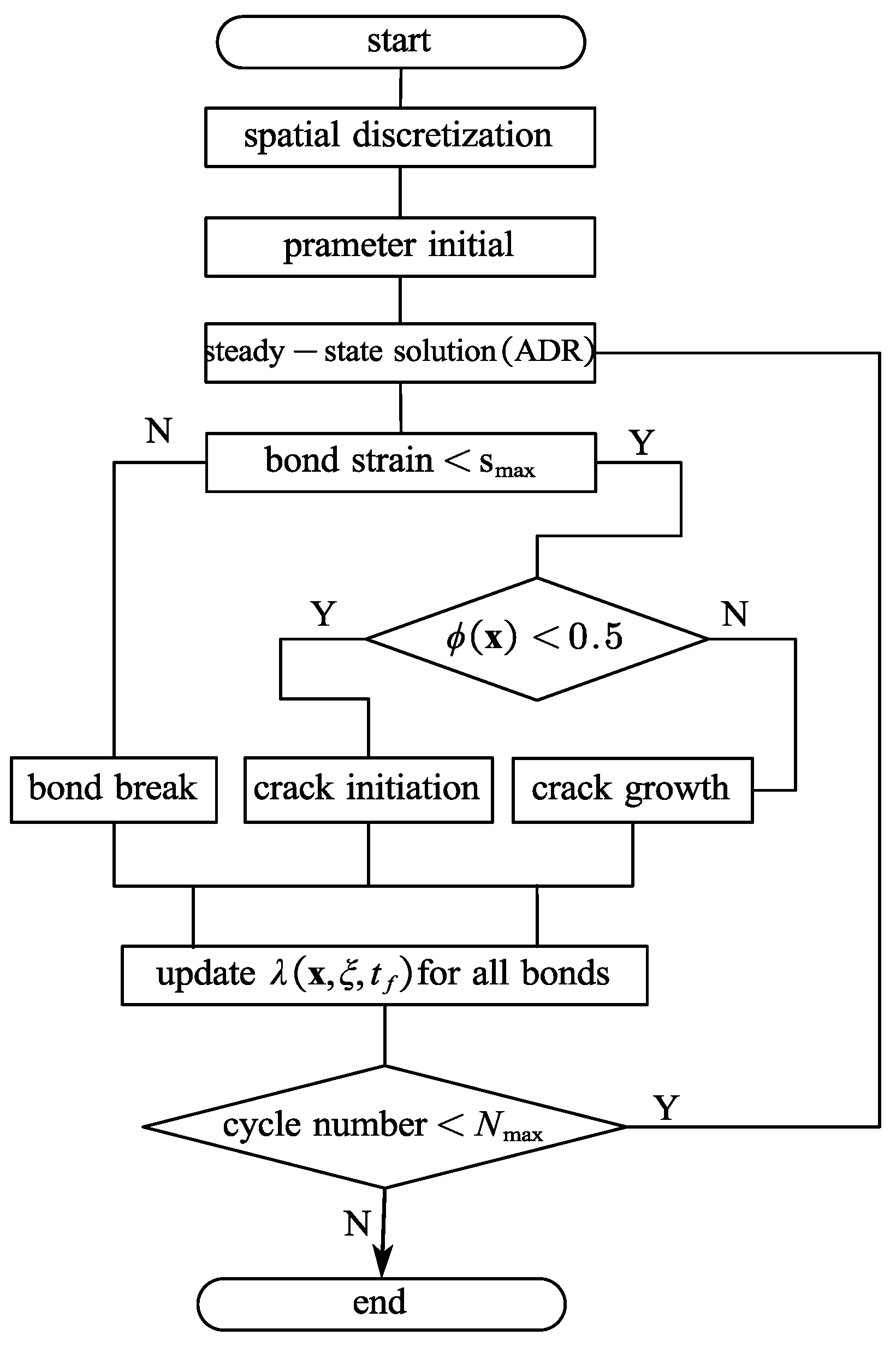

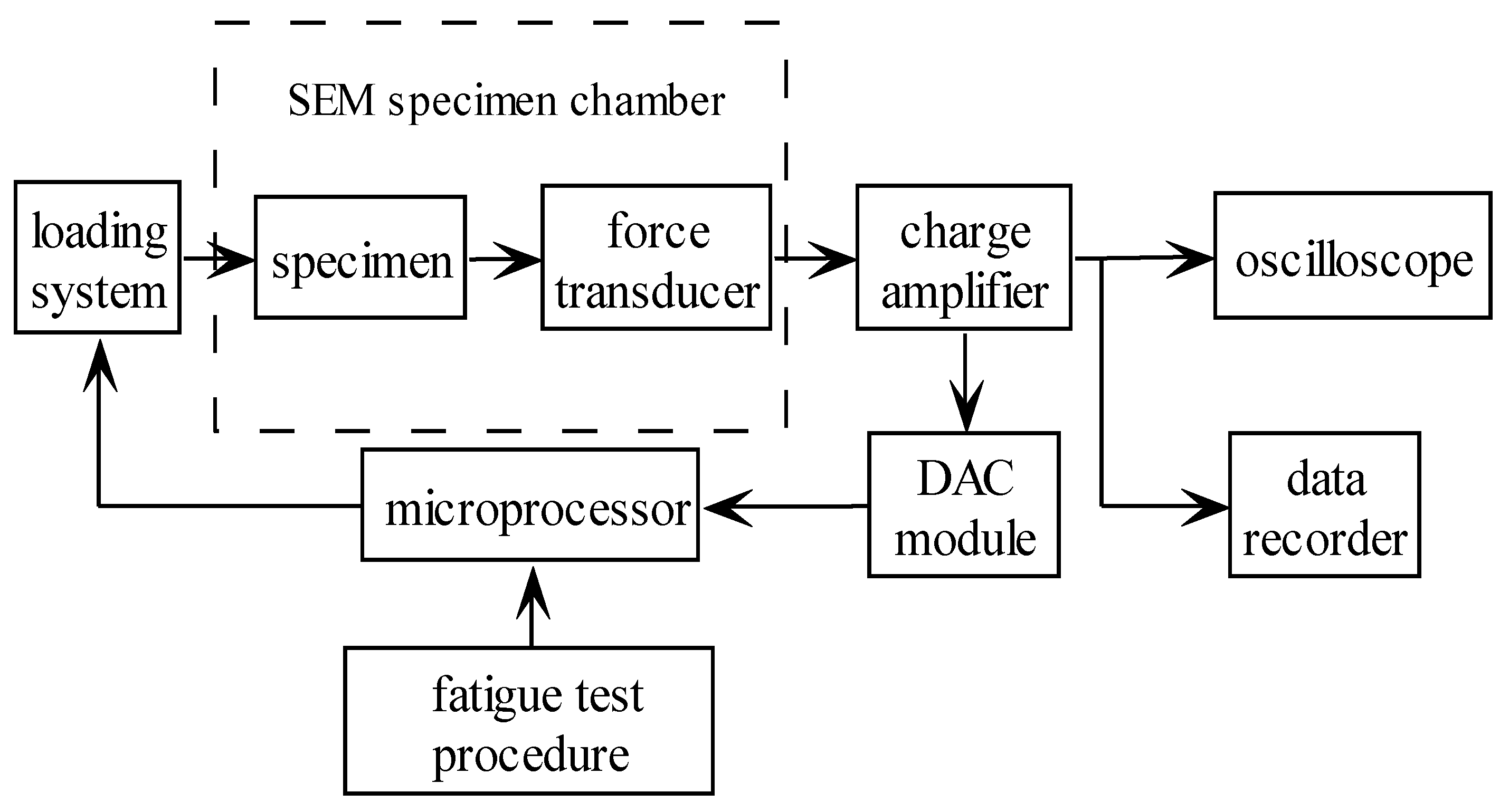
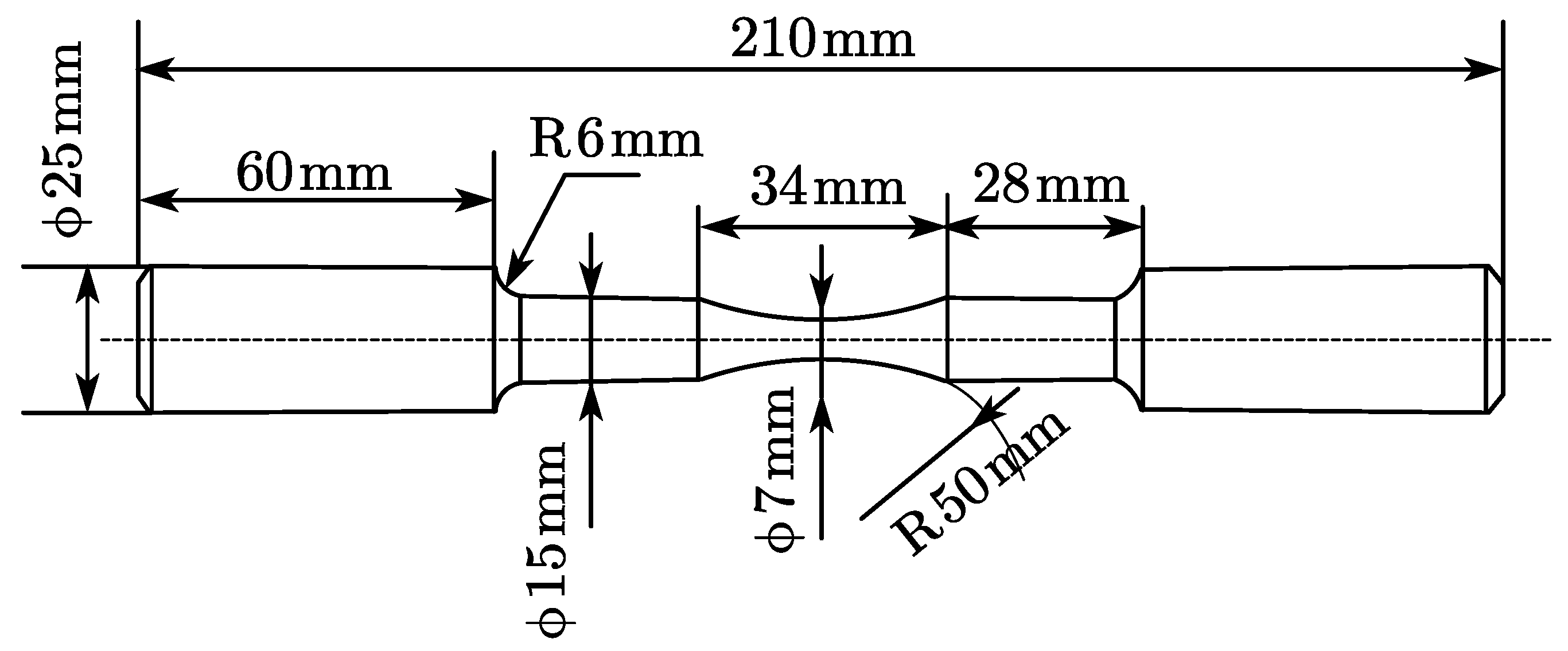


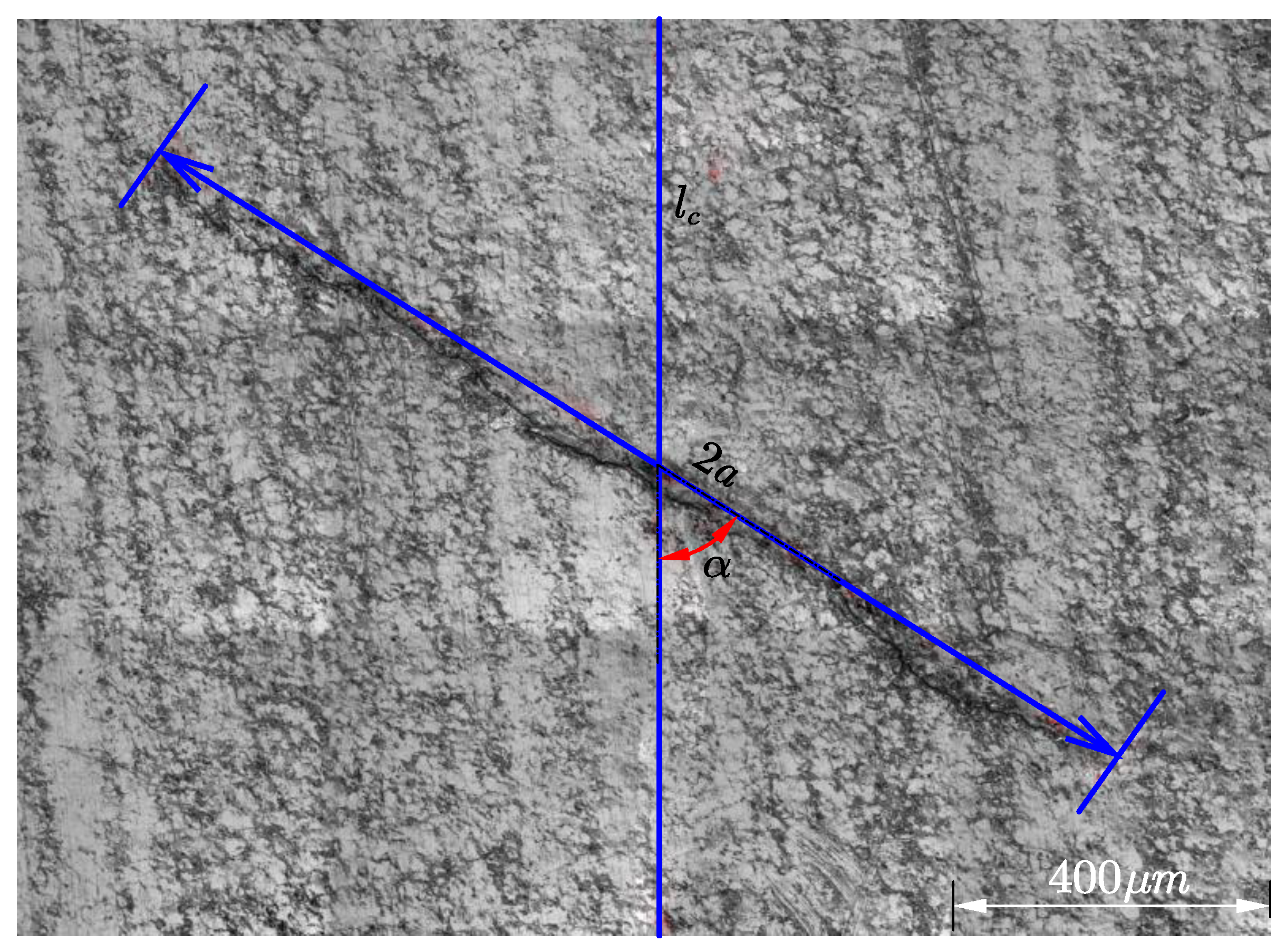

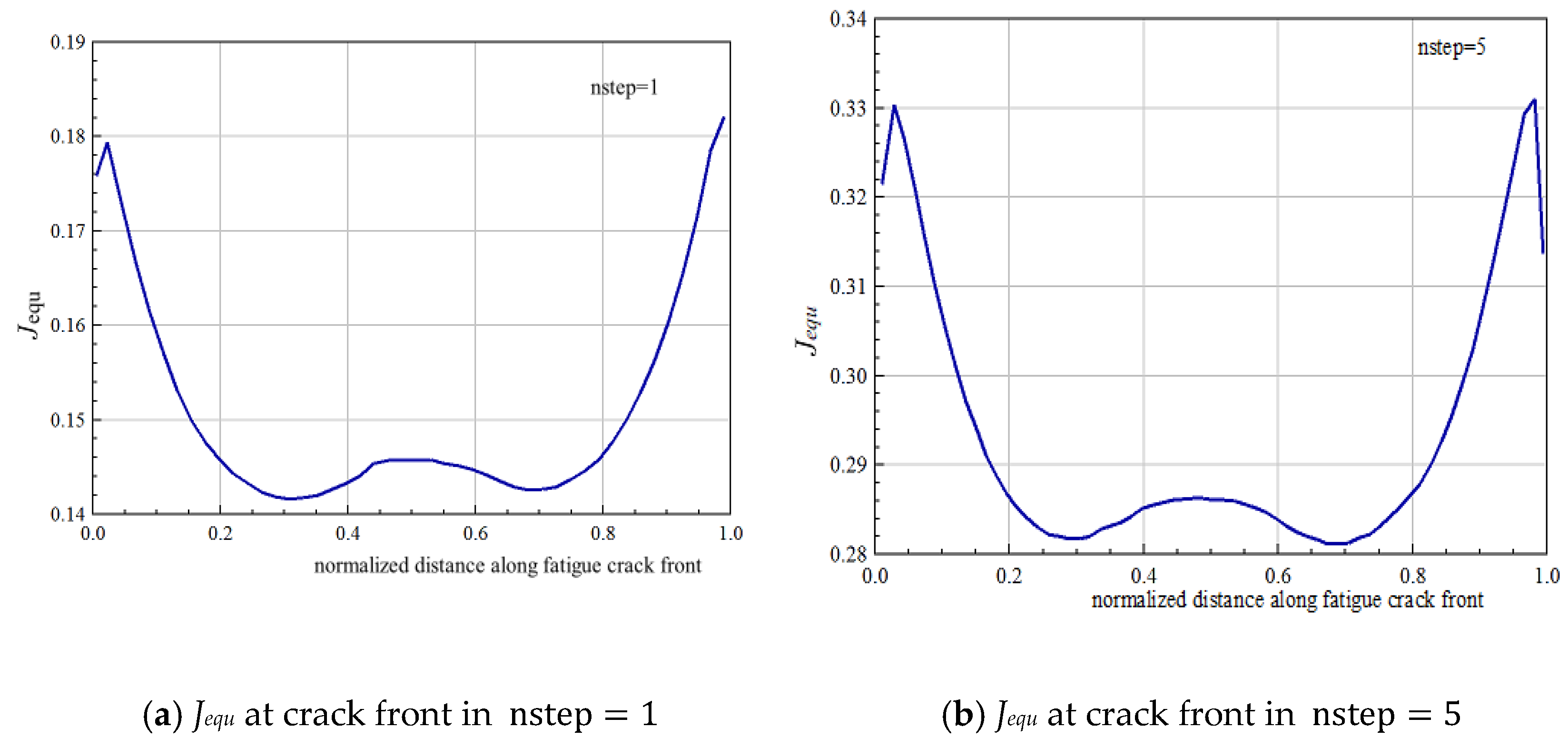
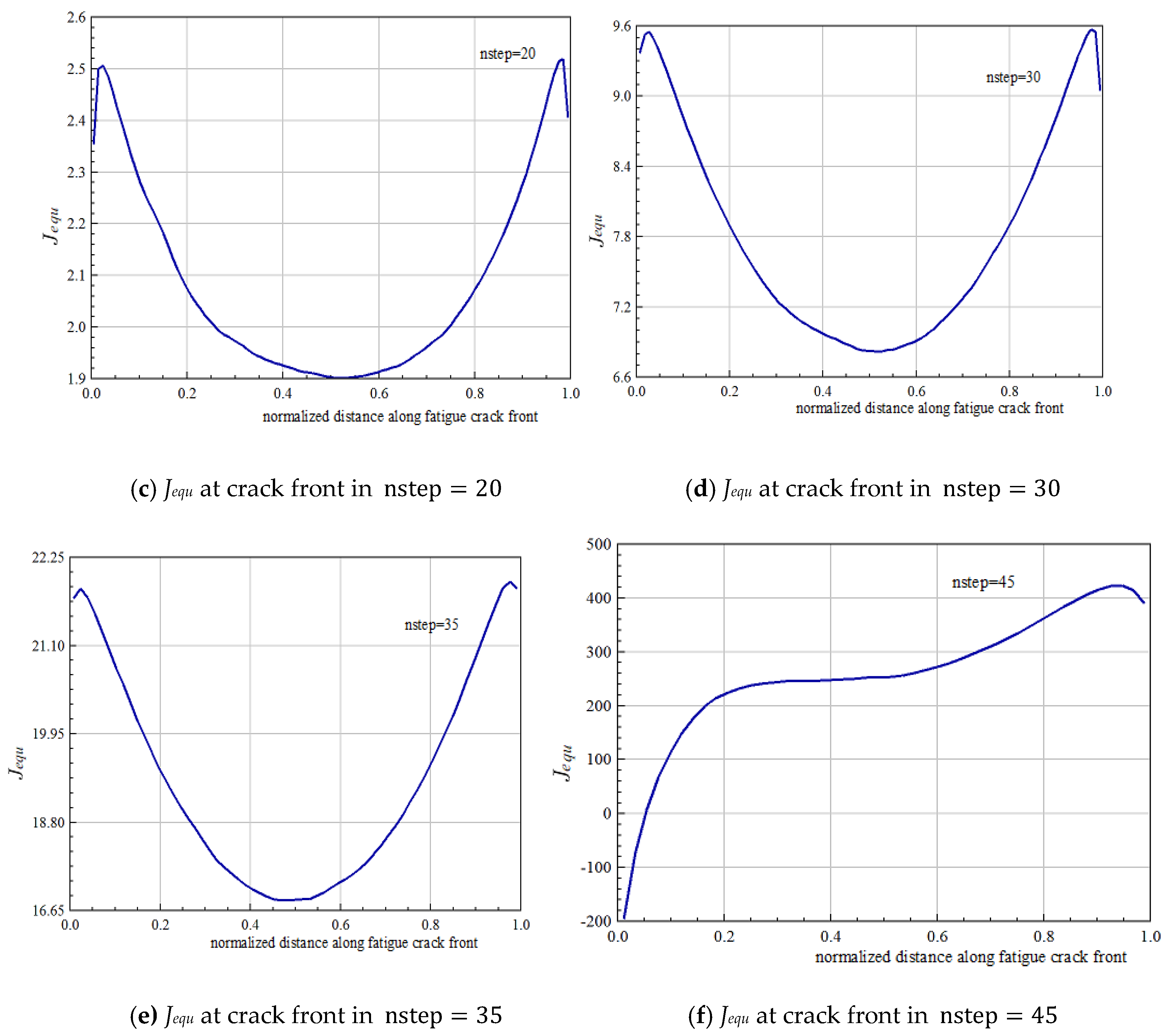
| C% | Si% | Mn% | P% | S% | Cr% | Cu% | Mo% | Ni% | V% | (Cr + Mo + Ni)% |
|---|---|---|---|---|---|---|---|---|---|---|
| 0.53 | 0.99 | 0.96 | 0.010 | <0.002 | 0.03 | 0.036 | <0.005 | 0.16 | <0.005 | <0.50 |
| Name | E/GPa | σ0.2/MPa | σb/MPa | δ% | Ferrite Hardness/HV | Pearlite Hardness/HV |
|---|---|---|---|---|---|---|
| D1 | 178.530 | 553.230 | 956.380 | 16. 21 | 210 | 250 |
| σa/MPa | τa/MPa | σequ/MPa | Ra | Fmax/KN | Tmax/N.m | φ/° | f/HZ |
|---|---|---|---|---|---|---|---|
| 340 | 196.3 | 480.83 | 9.6 | 8.3 | 90 | 2 |
| NO | N/Cycles | α/° |
|---|---|---|
| D1-1 | 16,239 | 57.8 |
| D1-2 | 15,860 | 61.5 |
| D1-3 | 17,963 | 70.1 |
| D1-4 | 16,938 | 50.2 |
| D1-5 | 15,608 | 53.6 |
| D1-6 | 15,656 | 67.5 |
| D1-7 | 15,320 | 62.8 |
| D1-8 | 14,352 | 68.8 |
© 2020 by the authors. Licensee MDPI, Basel, Switzerland. This article is an open access article distributed under the terms and conditions of the Creative Commons Attribution (CC BY) license (http://creativecommons.org/licenses/by/4.0/).
Share and Cite
Han, J.; Chen, W. An Ordinary State-Based Peridynamic Model for Fatigue Cracking of Ferrite and Pearlite Wheel Material. Appl. Sci. 2020, 10, 4325. https://doi.org/10.3390/app10124325
Han J, Chen W. An Ordinary State-Based Peridynamic Model for Fatigue Cracking of Ferrite and Pearlite Wheel Material. Applied Sciences. 2020; 10(12):4325. https://doi.org/10.3390/app10124325
Chicago/Turabian StyleHan, Junzhao, and Wenhua Chen. 2020. "An Ordinary State-Based Peridynamic Model for Fatigue Cracking of Ferrite and Pearlite Wheel Material" Applied Sciences 10, no. 12: 4325. https://doi.org/10.3390/app10124325





